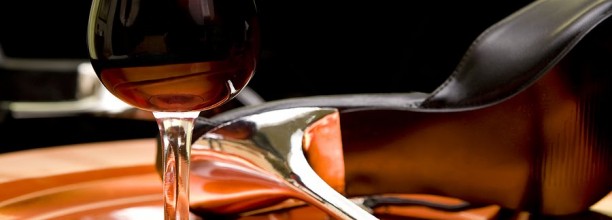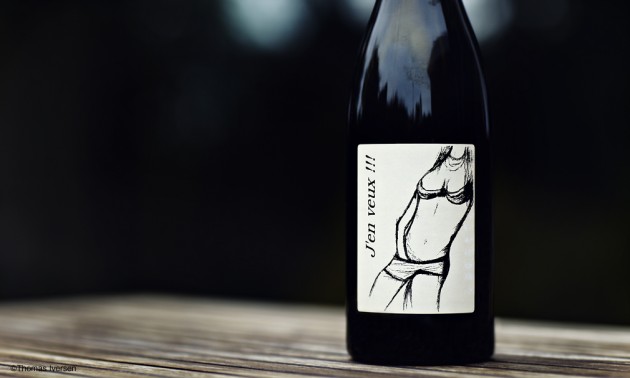
When we talk about wine styles we are talking about the sensory qualities of the wine, we are describing how it looks, smells and tastes.
Wines made from different grape varieties across a broad spectrum of climates allow winemakers to make wines in different ways, providing a wide selection of choices.
The choice of grape variety or blend of varieties, the time of harvest, the composition of the soil, the climate, weather conditions during harvest and viticultural management are all factors that provide the basis from which the winemaker will craft a wine of a particular style.
The winemaker will look to extract the perfect degree of components from the grape to create a perfect balance between its sensory characters and those characters which evolve from the winemaking to craft a certain wine style.
Wine made from grapes can be categorized into several broad styles or types: Sparkling Wines, (covered in the last edition) Dry Table Wines, (comprising, White Wines, Rose Wines, Red Wines) Sweet & Semi-Sweet Wines & finally Fortified Wines.
White Wines
In this edition we look at white wine and the various types and styles that make up the white wine spectrum.
Harvest
White wine is made from white grapes, (usually actually green or yellow in colour) which are harvested when the winemaker considers them to be at optimum ripeness for the wine style intended. That is to say, the grapes are picked when the winemaker deems the grapes to have the right balance of sugars, acidity, aroma compounds and flavour compounds.
Crushing & Pressing
The grapes are then transferred to the winery and gently crushed to split the berries and (if handpicked) to remove the stems. In making white wine, the crushed grapes are then cooled and immediately transferred to a press where the juice is gently squeezed from the skins.
Fermentation
The juice is normally then transferred, (to stainless steel tanks but sometimes to barrels or large wooden vats) where it will be chilled and left to stand in order to clarify the juice and remove small solids which settle to the bottom.
The juice will then be inoculated with yeast and fermentation will begin, fermentation is the process by which the yeast converts the sugars in the juice to alcohol, carbon dioxide, (which is expelled) & (in very small quantities) glycerol, with the result being wine.
Maturation
After fermentation, the yeast sells are allowed to gather in the bottom of the tank and the wine drained off to be stored either in tanks or barrels. With some styles the wine will be kept in barrel to soften and gain further complexity and pick up certain characters from the barrels, this wine will also sometimes be left on its yeast lees to gain even further complexity and the wine may also undergo a malo-lactic conversion, by which some or all of the malic acidity in the wine is converted, (by an introduced bacteria culture) to lactic acidity, making the wine richer, and somewhat ‘creamy’ in texture.
Filtration & Bottling
Once the winemaker decides that the wine is ready for bottling, the wine will almost always undergo another filtration to remove any final solids and will often be cold-stabilized to remove any unstable proteins in the wine and to prevent any crystallization and ‘dropping-out’ of unstable tartaric acidity. Phenolic compounds which can give the wine bitter, course tastes will also be removed at this point with a fining agent put through the wine. The wine is then ready for bottling, with some styles released almost immediately whilst fresh and vibrant and others held in the cellar for a time, to further soften and gain additional complexity.
Body
When we talk about the body or weight of a wine we are talking about how heavy a wine feels in the mouth. Wines are described as being either light, medium or full bodied and these terms help express the relevant weight of the wine in the mouth. The body of a wine results from the combined effects of several different components extracted from the fruit and in the winemaking process: the amount of flavour, phenolics, sugars, glycerol and alcohol in a wine will all contribute to its overall weight or body in the mouth.

Dry White Wine
Dry White Wines are those white wines that contain usually less than 7.5 grams per litre of residual sugar and are therefore dry to the taste on the palate. They can be broken down into three distinctive styles: Aromatic/Light-Bodied White Wines, Medium-Bodied White Wines and Full-Bodied White Wines. Then of course, there are the Sweet and Semi Sweet White Wines and finally Fortified White Wines but we will come back to those a little later on.
Aromatic / Light-Bodied, Dry White Wines:
Light bodied dry white wines are usually crisp, refreshing and often highly aromatic, they usually receive no oak and are released to the market relatively quickly whilst they are fresh and vibrant.
Aromatic whites are named so for their powerful aromas, they typically have good acidity and are almost always produced in stainless steel tanks instead of wooden vats or barrels to preserve the freshness of their aroma. Common aromatic white wines are Riesling, Gewurztraminer and Sauvignon Blanc (which may also be made in other styles).
Common Light bodied white wines are Chablis, Pinot Grigio, Pinot Gris, Alberino, Saove & Gavi. Cooler Climates such as Alsace, Sancerre, Chablis, Northern Italy, the Clare Valley in Australia and much of New Zealand are popular regions to look for aromatic and lighter bodied white wines.
Medium Bodied Dry White Wines:
Medium Bodied Dry White wines usually have more fruity characters and some may have even a little oak, they are slightly more heavier and richer in the mouth than light bodied wines. Common medium bodied varieties are Marsanne, Viognier, Semillon, Pinot Gris, Sauvignon Blanc.
Full Bodied Dry White Wines:
Full Bodied White wines are rich and complex, usually have some oak influence and often have a creamy texture on the palate, two of the most popular fuller bodied white varieties are Chardonnay, Viognier. Meursault, Montrachet in France, and many new world regions are popular producers of fuller bodied dry white wines.
Sweetness in Wine:
Sweetness in wine is derived from only partially fermenting the juice and leaving residual sugar in the wine that is perceived on the palate as sweetness. Viticulturists and winemakers have a number of options available to them to produce a sweet white wine. Grapes may be left in the vineyard to ripen to very high levels of sugar concentration or a fungus known as botrytis cinerea may be allowed to occur naturally in the right conditions or inoculated where required. This fungus will remove water from the great leaving a higher concentration of sugars (as well as acids) in the juice that is left, as the grape also retains a high concentration of natural acidity, sweet wines made in this style are considered to be better balanced and more ideal than sweet wines made with over-ripening alone. Ice Wine is produced in certain regions, mostly in Germany, Austria and Canada and is produced when botrytis infected grape bunches are frozen on the vine.
The water in the grape is frozen whilst other dissolved matter such as sugars, acids and flavour compounds are not, allowing for an intensely concentrated juiced to be pressed from these grapes and produces some of the sweetest and most highly regarded sweet wines on the planet.
Semi Sweet White Wines:
Semi Sweet or, Off Dry white wines generally have around 10 to 30 grams per litre of residual sugar in them; they have fragrant aromas and flavours with noticeable sweetness on the palate.
These wines can be light to medium to full bodied and are characterized by their level of sweetness. Typical varieties used to produce semi-sweet wines are Riesling, Gewurztraminer, Pinot Gris, Torrontes, Moscato.
Sweet White Wines:
Sweet white wines are sometimes called dessert wines; they usually have from 30 grams per litre of residual sugar to up over 100 grams per litre. They are intensely sweet and concentrated and the very best of them are balanced with a fine acidity so they are never sickly sweet or overly cloying. Semillon, Sauvignon Blanc, Grunner Vetlinger, Riesling, Gewürztraminer and Pinot Gris are popular varieties in this style. Alsace Sauternes, Barsac, Germany and Austria produce excellent sweet white wines.
Fortified White Wines:
Fortified wines are wines that have had a base spirited (usually brandy) added to them, they are often quite sweet although not exclusively and they are usually quite high in alcohol given they have alcoholic spirit added to them. Sherry, Madeira, Muscat de Beaumes de Venice are the most common types of fortified white wine. Vermouth is a fortified wine flavoured with herbs and spices.
When pairing wine with food, the body or weight of the wine can play a guiding role, looking to pair lighter wines with lighter dishes and heavier wines with heavier dishes. In warmer climates white wine may also be well chilled to provide a refreshing drink.
